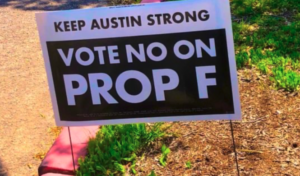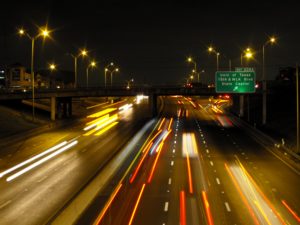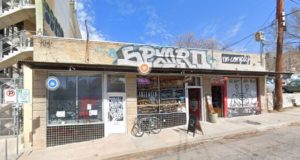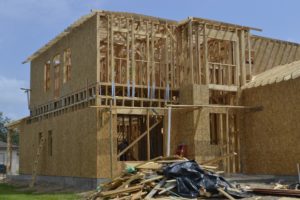About the Author
Elizabeth Pagano is the editor of the Austin Monitor.
-

Newsletter Signup
The Austin Monitor thanks its sponsors. Become one.
Most Popular Stories
- New federal cash paves way for East Austin’s ‘wishbone’ bridge over Lady Bird Lake
- Austin’s airport is getting a new concourse and 20 more gates but not until the 2030s
- Judge rules city can’t use taxpayer money for South Central TIRZ
- Democrats vs. Republicans: First election coming for Travis Central Appraisal District board
- Save Our Springs Alliance sues City Council over Open Meetings Act
-
Discover News By District

2021: Remembering the year that was
Thursday, December 30, 2021 by Elizabeth Pagano
Though everyone reading this lived through it, it’s still somewhat unbelievable that 2021 continued the vibe of 2020. Nonetheless, we are taking a backward glance at what happened in our fair city over the past 12 months and throwing caution to the winds in looking forward to the next 12. See you in 2022!
The Pandemic

Photo by Chris Zúniga
Safe, effective vaccines were widely available by spring – yet we still weren’t quite able to leave Covid-19 behind. And the ongoing pandemic dominated the way we conducted our daily business. For City Hall, that meant a return to in-person meetings, but with a new (permanent?) hybrid option allowing speakers and commissioners to join meetings virtually. For everyone else, it meant a brief, cautious glimpse of freedom this summer, before the delta variant sent everyone scrambling to their respective, liberty-tinged protocols. In other words, things continued to be a hodgepodge of public health measures.
Schools rebelled against the state and implemented masking rules. Music festivals were held, shows were canceled. Things kind of opened, and the city and county continued to cooperate to get vaccines out as we ended our year with a vaccination rate of about 68 percent. And as we finish the year, a looming omicron variant is sending everyone scurrying again.
Winter Storm Uri

Photo by Austin Energy
As if the second year of a worldwide pandemic wasn’t enough to contend with, Austin joined the rest of Texas in suffering the unprecedented wrath of Winter Storm Uri. For some, the storm was deadly. For many, it meant losing power as rolling blackouts had nowhere to roll and losing water as pipes burst one by one. For everyone, it meant a boil-water notice and nearly a week of snow and ice that paralyzed our entirely unprepared city.
Camping ban returns, investment in homelessness increases
Until City Council dismantled them in 2019, Austin had a series of laws that effectively criminalized homelessness. Two years later, with tents filling city parks, a petition to reinstate the ban – Proposition B – easily passed back into law, putting the city on the hook for figuring out how to enforce it.

Photo by Lars Plougmann
However disconcerting the election may have been to some, the ensuing months saw an energized and highly successful push to raise money for the issue of homelessness, bolstered in no small part by federal relief dollars from both the city and the county. Though a plan for encampments may have fallen flat (to say the least), the larger plan to help people experiencing homelessness appears to be on track.
Prop A flames out, reimagining is reimagined
Speaking of voter-led ballot initiatives, the victory Save Austin Now enjoyed with Prop B in the spring completely deflated in November when Austin voters unequivocally shot down Prop A. The ballot item would have mandated staffing for the police department based on the false premise that the department had been “defunded” by City Council, turning Austin into a real-life Gotham in the process.
Of course, the city’s efforts to reimagine public safety have largely been preempted by the state Legislature, with the passage of House Bill 1900. Though the new state law greatly impedes Council’s plans to reallocate resources away from APD, the city has moved forward with a few changes, including a new police chief and a reformed police academy.
Strong-mayor flops

Photo by Jo Clifton
After years of muttering that it was imminent, a charter amendment that would flip Austin to a “strong mayor” system of government sunk without even putting up a fight. The failure was telegraphed fairly early on, with Council and unions lining up to denounce the change that would have given the mayor the power to veto Council-approved legislation in a way that made many nervous.
I-35 expansion comes into focus

Photo by Matthew Rutledge
Plans to expand Interstate 35 through downtown have been in the works for a while now, but as they solidified this year the issue finally found the spotlight. Many (including the city) spoke out against the idea of widening the downtown stretch of I-35 in a way that would increase the historic gap between East and West Austin and raze homes and businesses in the process. Though TxDOT was open to the feedback, it didn’t seem like the transportation authority was particularly open to using that feedback to change its plans. Instead, the city is now looking at the olive branch that was extended from the onset: a series of “cap and stitch” projects that could bridge the highway with plazas and green spaces after the decks are lowered.
Women’s jail plans put on ice
Criminal justice advocates made an impact at the county, where a long-term plan to expand the jail was shelved after community protests. Ultimately, county commissioners opted to revamp the jail’s master plan, an ongoing process that aims to reduce the number of incarcerated women while all expansion plans are put on hold for the time being.
No-Comply thwarts its demise

Photo by city of Austin
In smaller news, a giant public outcry over the proposed demolition of a local skate shop resulted in the unexpected: Austin Community College scrapped a plan to demolish No-Comply to build a parking lot. Instead, after an emotional hearing, the college is working with the shop to come up with a better plan. Yes, it’s just one of many demolition cases to pass through the Historic Landmark Commission this year. But in a rapidly changing city during a time of exacerbated disconnection, it was a rare win for community.
Boards and commissions rebel against move
Despite not meeting in person for over a year (or maybe because of it?), the Planning Commission, Zoning and Platting Commission, and Board of Adjustment banded together to protest a proposed move to the city’s new Permitting and Development Center. Commissioners argued that the new location will inhibit public participation and make it hard for those who rely on public transportation and those who live south. This story will carry into the new year, with City Council now tasked with weighing in on Jan. 27.
Housing, still housing
 Finally, of course, the city continues to wrestle with its ongoing housing crisis. Despite building a ton during the pandemic, steeply rising prices and a ballooning population continued to dominate the headlines, even landing Austin in The New York Times on more than one occasion. Though the bidding wars of 2020 seem to have cooled a bit, it hasn’t made for cheaper places to live, with house prices and rent the highest they’ve ever been. Meanwhile, the Land Development Code rewrite remains held up in court, everyone is falling behind on affordable housing goals (with special shout-outs to districts 5 and 10, which saw no new affordable units built last year) and city officials are left brainstorming ways to get more houses on the ground.
Finally, of course, the city continues to wrestle with its ongoing housing crisis. Despite building a ton during the pandemic, steeply rising prices and a ballooning population continued to dominate the headlines, even landing Austin in The New York Times on more than one occasion. Though the bidding wars of 2020 seem to have cooled a bit, it hasn’t made for cheaper places to live, with house prices and rent the highest they’ve ever been. Meanwhile, the Land Development Code rewrite remains held up in court, everyone is falling behind on affordable housing goals (with special shout-outs to districts 5 and 10, which saw no new affordable units built last year) and city officials are left brainstorming ways to get more houses on the ground.
Photos made available through a Creative Commons license.
The Austin Monitor’s work is made possible by donations from the community. Though our reporting covers donors from time to time, we are careful to keep business and editorial efforts separate while maintaining transparency. A complete list of donors is available here, and our code of ethics is explained here.
You're a community leader
And we’re honored you look to us for serious, in-depth news. You know a strong community needs local and dedicated watchdog reporting. We’re here for you and that won’t change. Now will you take the powerful next step and support our nonprofit news organization?









